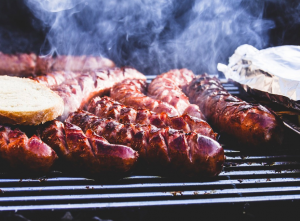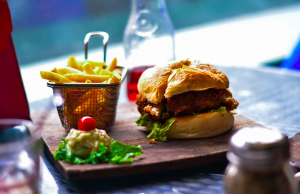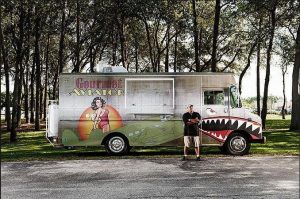I analyze EVERYTHING about my business. You should see my spreadsheets (I’ll share them once I get them all bundled up). Some would say, it’s overkill. I say, it’s research. And at the end of every year, I write these posts about how my business performed.
Why do I do this?
Analyzing your business provides you with insights you would never see if you simply handed over a profit & loss statement to your tax accountant and called it a day. For example:
- What was your most popular flavor?
- Which retailers increased sales of your product?
- Which distribution channel is your most profitable?
- Where should you aim to cut costs in the new year?
It’s exciting to learn about your business – how it operates, performs, and (hopefully) grows. These questions are the tip of the iceberg when you dive deep into your food business.
After about 20 spreadsheets analyzing Green Mountain Mustard, here’s what I learned about my business in 2015:
The three most important numbers on your income statement

BBQ grilling is better as a team sport.
Sales, gross profit margin, and net profit margin. It’s true. There’s no disputing it. All three numbers effect your business in the same way — they have a direct effect on the amount of money you make. In fact, our sales were down about $6,000 and our gross profit margin went up 4% compared to 2014. That’s never a good combination. BUT, our gross profit margin increased 42%. (Read: I paid my rent and my grocery bill).
The main driver was our operating expenses — they went WAY down because we didn’t do large trade shows, we didn’t get hit with legal bills, and shipping & transportation went down — basically, I didn’t send a boat-load of free boxes of mustard this year. Oh, I mean, retailer samples who didn’t end up purchasing. That’s ok — we made some money this year, and that’s something to be happy about.
Pay attention to these three numbers. You need to know what they mean. You need to know how fluctuations in all three effect the end result. And you need to know how to raise or lower them. With optimization of these three numbers, you’ll be able to run a tight ship through next year.
I was not making money selling to Bed, Bath, and Beyond
I like to analyze a couple of direct accounts for profitability once a quarter. This time, it was Bed, Bath, and Beyond. We sell three skus of mustard in 8 of their stores – at $5.99/jar. I was so excited to land the account, until I realized it cost me $600 in annual software fees just to sell to them. This software makes receiving, processing, and shipping orders almost four times as long as a normal online order. Here’s the P&L for BBB for 2015:
- Our sales were only that high because they decided to run a promo in Feb/March. Without the promo – sales would have been below $1,000 annually. And I would have lost money.
- COGS is higher because we discounted our wholesale price to them $0.27/unit
- OPEX is high because we have to pay for $600 in software, plus time and gas to get the orders fulfilled.
- BBB requires you to have a fax number. I pay $10/month for the number and have never used it.
I let the buyer know we were done doing business with them. He wished I’d talked to him sooner. I replied with the numbers you see above and have yet to get a response. Sure, it will be a hit to top-line sales next year, but not to my bottom line. At this point, I’d rather save the $600.
What’s the lesson? If you feel like you’re doing a lot of work for little gain, analyze a retailer’s profitability (or an event for that matter). And be confident in your decision. The numbers do not lie.
Almost all of my net profit is generated from May – December
While this may not be mind-blowing to some of you, January – April is completely dead for me. It has been for years. Almost makes me wonder if I should just run my business May – December and take an operating loss for four months.
93% of my money is made during the months of May – December. That’s for three reasons:
- Festivals start up in May
- People start buying mustard on Memorial Day Weekend
- People give mustard for gifts at holiday time
That means I can spend time working on side projects – like launching a new Gredio course in March! I can also plan for the remainder of the year to make sure I have all of my ducks in a row. And maybe, you know, take a vacation!
What are your best money-making months? Can you optimize them to make even more money?
The 80/20 rule applies to events and festivals, too

Events are 40% of our revenue – compared to 47% last year. To put that in perspective, revenue fell by $10,000. We do events to gain awareness for our product, generate online orders throughout the year, and make money. But, the old saying 20% of your effort gets you 80% of your results is true.
- In 2014, we did 29 events (plus a 6-month local farmer’s market). We spent 2 exhausting months on the road selling mustard from Maine to Pennsylvania.
- In 2015, we did 14 events (plus a 6-month local farmer’s market). We spent 1 month on the road. The profit difference from 2015 was just $855.
- In 2016, we’re doing 7 events (plus a 6-month local farmer’s market). We’ll spend 10 days on the road. The profit difference is about $3,500.
The couple thousand dollar loss is worth it because I get some of my life back. Sure, we’ll still do the farmer’s market, but I’m no longer committing a large amount of my year to driving all over the place. I eliminated events based on the money/hour I made. Ultimately, this saves me the most time. Plus, it allows me to focus on increased local retail sales to make it up for the loss from events.
You sell more product if you drop your price
I know, I know. This is obvious. But, I needed to prove it to myself. So, I ran a pricing experiment with a retailer who is willing to try anything. I dropped my shelf price from $5.79 to $4.99 and went on promo for $3.99. I normally sell mustard to customers for $7 a pop, so this was a dirt-cheap price. And it worked. Here are the final results:
Sales in 2014:$1,509.84
Sales in 2015: $3,198.52
Units in 2014: 396
Units in 2015: 918
Sales increased 111%. Units moved increased 132%. If replicated across my top 20 retailers, this should result in sales increase of roughly $3,000 – $5,000. While this retailer performs well in general, I tested the theory with consumers in December. Combined with Christmas shopping, I did well. Here are a few things customers had to say:
- “$5! That’s a great price!”
- “I might as well get 2 – they’re only $5.”
- “$5! That’s cheap.”
I’m ok with someone calling my product cheap. They bought it, didn’t they? In some states, $7 is cheap. But, on the whole $5 is the price where people show no hesitation to purchasing. And they do increase the units they bought.
Lesson Learned? I need to work on getting my COGS down to increase my margins to make $5 possible across the year. But, I also learned mustard is a commodity. You’re competing with mustard on the shelf that’s less than $1.00. To charge $6.99+ for a jar is not sustainable. There are only so many people out there who want to buy mustard for $6.99.
Store demos are not the best use of my time
Demos are the necessary evil of the food industry. If you can’t get there yourself, you have to hire a demo company. But, the cost of hiring a demo company eliminates all profit from a buyer’s re-order – or worse – you lose money. To avoid this, I did demos myself. Bottom line – not worth it.
The most jars of mustard I sold at a demo was 16 in two hours. That was amazing – and right before Christmas. Plus, we were on the above promo for $3.99. But let’s break the 16 jars down into some actionable results:
- Sales: $63.84 (shelf price)
- Sales: $54.24 (price to retailer)
- COGS: $29.60
- Promo Cost:$8.00 (during promos, I pay $0.50 a unit in promo support)
- Gas: $3.43
- Net Profit: $13.21
In 2 hours I made $13.21 – or $6.60 an hour. And this was my best demo of the year. Most 2-3 hour demos, I sell less than 12 jars. This means that doing demos, for me, is not the best use of my time. I’m making less than I could at WalMart – significantly less. I could be spending that time getting new retailers, where I make $50-75 on an initial store order. Sure, it’s contradictory to the old adage “it’s cheaper to get more money from current customers than it is to get new business”, but that’s been my experience so far. I’m happy to send samples to any retailer who asks for them so they can do a passive demo.
I need to increase my free-shipping threshold

I spent over $5,085 on shipping this year. It was my most expensive operating cost by far. I did charge for some of that shipping ($1,656). That leaves me with a net shipping expense of $3,429. Still a lot of money. Some of this came from shipping samples to retailers who didn’t buy, but most of it came from my low free shipping threshold on BuyMustard.com. I offer free shipping over $30 to entice buyer’s to purchase our mustard. It’s helped lift our conversion rate online – but at a cost.
I need to raise my free shipping threshold to $50 with a flat-rate shipping cost of $4.99. I may lose a handful of orders, but it ultimately makes my online sales more profitable – even if I shave $1,000 off my shipping expenses.
I’m also going to look into partnering with an order fulfillment company who has deep discounts with USPS, FedEx, and UPS.
I need to create systems to increase my productivity
Just when I think I’m productive, something that’s not organized eats at my time. I can’t find files. I can’t remember passwords. I can’t find a billing address. Oh, and my accounting. I need to stop this whole double-entry thing and hire a bookkeeper. Creating systems to increase your productivity is something I’ve always read about, but never put into action. After reading Getting Things Done, I’ve started to create an “in” pile that gets processed at the start of each day. I’ve outlined projects with next action items. The next step is organizing files and records on my computer. A clean computer – and clean work space – means a clean mind.
To organize all of my to-dos, I’ve been using Trello – a free drag-and-drop task planner. The trick is to use it everyday. Still lacking here. But, I learned I need to put time and energy into organizing my business life.
I also worked with my business coach to start saying no to things. The process is simple: Write down your 3-5 goals for the year. If an opportunity presents itself that doesn’t line up with one of your goals – say a meeting, sales call, donation, or event – you say no. This simple change has helped immensely. Now my plate doesn’t look like Thanksgiving every day.
Regular meet-ups with foodie friends curb my insanity
I love to talk shop with other food producers – smaller than me and bigger than me – because I not only learn a lot about how they approach business, but I’m able to help them solve problems I’ve already figured out – and vice versa. It was monthly at one-point – and sometimes by email. In 2016, I’m making more of an effort to get together a small group of food producers to talk about anything they want.
Take enormous risks
Later this month, I’ll embark on my biggest business venture to-date: a co-packing kitchen I’m opening alongside two food business owners in South Burlington, VT. We’re currently in renovation mode and hope to open in mid-January. I’ll let you all know more about the facility once we’re up and running.
Why take this risk?
There was only so much mustard I could manufacture at my current co-packer (one of my business partners). I wasn’t able to get my costs down to become a viable, sustainable business. With this new facility, I’m able to purchase ingredients and packaging in bulk and increase my efficiencies. This means coming down in price and moving more product.
Plus, the mustard company is only part of my plan. I want to build a portfolio of Vermont food products. 2016 will be an exciting year for my team and I. I can’t wait to share experiences with you as I start this new adventure. Wish me luck!

Leave A Comment